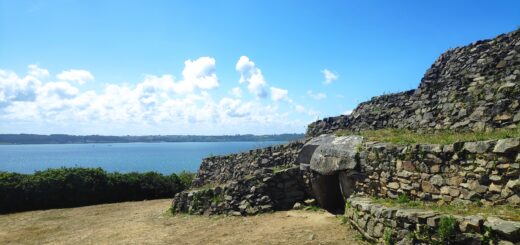Revolutionizing Knowledge Management with Tilemap Web Apps: From Dungeons & Dragons to Italian Palaces
Introduction
Tilemaps have long been a staple in the realm of tabletop gaming, particularly for Dungeon Masters (DMs) orchestrating intricate campaigns in Dungeons & Dragons (D&D). These maps allow DMs to create visually rich environments, charting out fantastical landscapes filled with dungeons, towns, and wilderness areas that set the stage for epic adventures. But what if we could take this concept beyond the realm of fantasy and use it for something more practical? What if we could map our knowledge in a similar manner, turning our minds into grand Italian palaces of information? Welcome to the innovative world of advanced mind-mapping using tilemaps.
Tilemaps in Dungeons & Dragons
In D&D, a tilemap is essentially a grid-based layout where each tile represents a piece of the game world. DMs use these maps to plot out dungeons, caves, forests, and other environments. Each tile can represent different terrains, obstacles, or features that players might encounter. This visual aid is crucial in helping players navigate and immerse themselves in the story.
The process of creating a tilemap involves placing various tiles on a grid, each with specific attributes and features. These maps are not just geographical guides; they also contain crucial narrative elements and encounter points that drive the storyline forward. This method of mapping helps in visualizing complex scenarios and spatial relationships within the game world.

The Concept of the Italian Palace
The Italian Palace, or the method of loci, is an ancient mnemonic device used to organize and recall information. The idea is to imagine a building, such as a grand palace, and mentally place pieces of information in specific locations within it. When you need to recall that information, you “walk” through the palace in your mind, retrieving details from the locations where you placed them.
This technique leverages spatial memory, which is often stronger and more reliable than rote memorization. By associating knowledge with physical spaces, you can create a mental map that helps in organizing and recalling vast amounts of information.
Combining Tilemaps with the Italian Palace Concept
Our web app takes inspiration from both the intricate tilemaps of D&D and the cognitive strategies of the Italian Palace to create an advanced mind-mapping tool. Imagine a digital world map where each location is a repository of your knowledge. This map allows you to visually organize and access information in a way that is both intuitive and engaging.
How It Works
- Create Your World Map: Start by designing your digital world. This could be a representation of your mind, with different regions dedicated to various domains of knowledge.
- Assign Locations: Each location on your map represents a specific area of knowledge. For example, a castle might contain your knowledge about history, while a forest could represent your understanding of ecology.
- Populate with Information: Just as you would place narrative elements and encounters in a D&D tilemap, populate your knowledge map with detailed information. Each tile can hold text, images, links, and other media that pertain to that subject.
- Navigate and Retrieve: Use the map to navigate through your knowledge domains. When you need to recall specific information, “travel” to the relevant location on your map and retrieve the details stored there.
Potential Uses
- Education: Students can create maps of their coursework, visually organizing subjects and topics for better understanding and recall.
- Research: Researchers can map out their literature reviews, methodologies, and findings, making complex information more manageable.
- Personal Development: Individuals can use the map to organize personal goals, hobbies, and skills, creating a holistic view of their personal growth.
Conclusion
Transforming the traditional use of tilemaps from Dungeons & Dragons into a sophisticated tool for knowledge mapping is an exciting innovation. By combining the visual and spatial strengths of tilemaps with the mnemonic power of the Italian Palace, we can create a unique and powerful method for organizing and recalling information. While this concept is still in its experimental phase, the potential benefits for education, research, and personal development are vast. We invite you to join us in this journey and explore how this advanced mind-mapping tool can revolutionize the way you manage and access knowledge.


